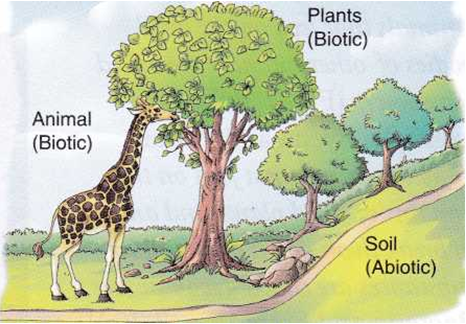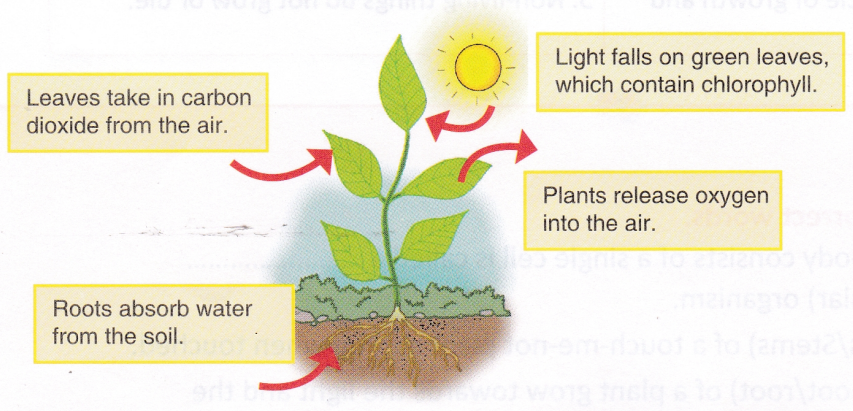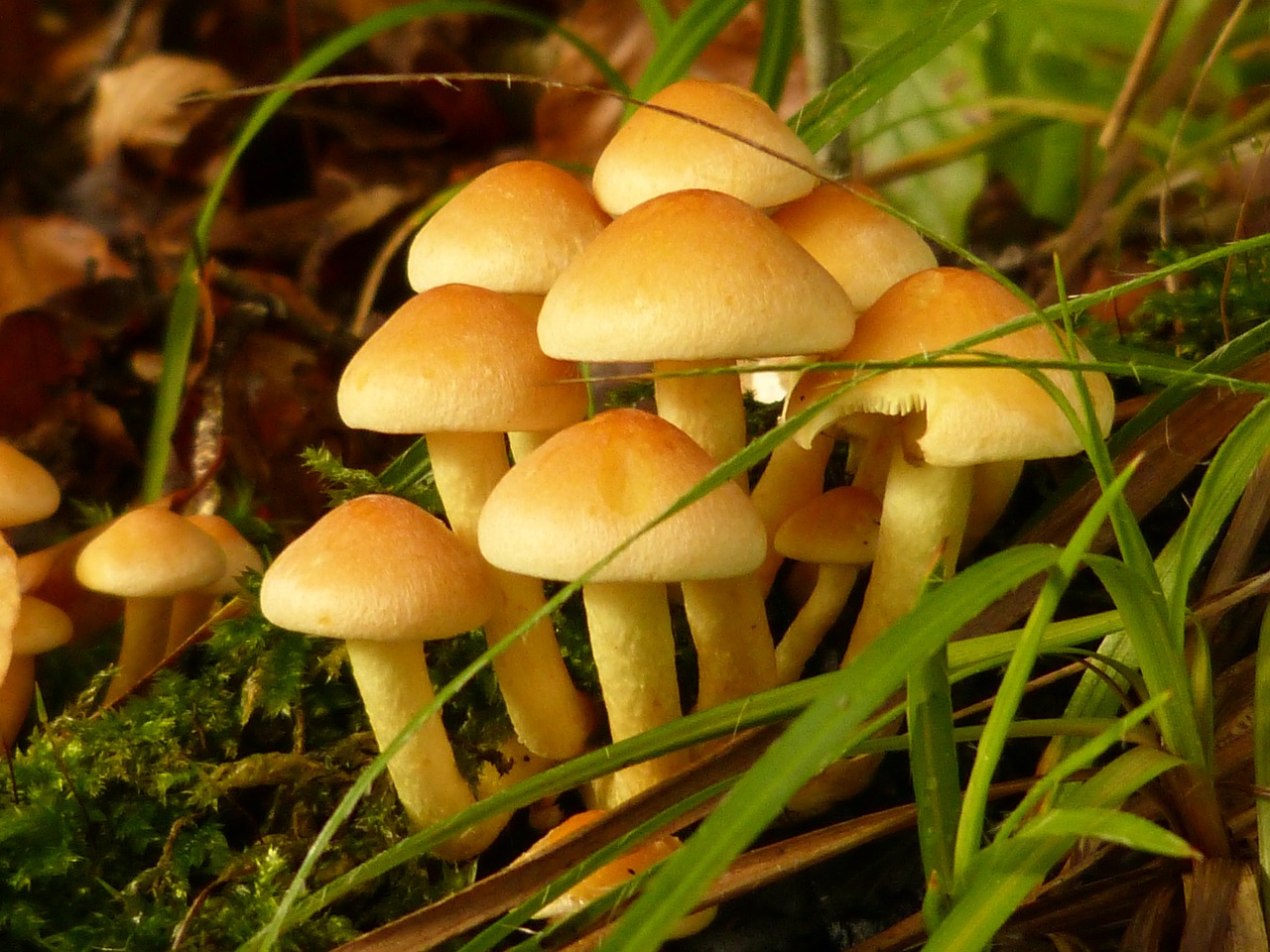What is meant by Biotic Components in Environment
All living things depend on their surroundings for food, water, and shelter.
All that surrounds living things and affects their growth and development is called their environment.
Both living and non-living things form the environment. Thus, we can say that the environment is made up of two parts or components – biotic and abiotic.
Components Of Environment
- Living things like plants and animals are called biotic components.
- Non-living things like air, light, water, soil, and temperature are called abiotic components.

1. Biotic Components
The word ‘biotic’ means ‘living’. Biotic components are those that have life. Plants, animals, scavengers, and decomposers are biotic components.
Plants
Most plants have green leaves. Leaves are green because they contain a green pigment called chlorophyll (<chloro, green; phyll, leaf). Chlorophyll gives plants the special ability to make their own food using light, water, and carbon dioxide.
The process by which green plants make their food using carbon dioxide and water in the presence of light and chlorophyll is called photosynthesis (photo, light; synthesis, production).

Animals
Animals cannot make their own food, as green plants do, thus they are called heterotrophs. Both animals and plants need substances called nutrients in order to grow. Plants absorb nutrients like nitrogen, phosphorus, and calcium from the soil. These nutrients enter the bodies of animals when they eat plants or the flesh of other animals. After these plants and animals die, their bodies decompose and nutrients reach back to the soil.
Scavengers and Decomposers
Some organisms feed on the bodies of dead plants and animals and release the nutrients trapped inside them.
Animals that feed on the dead bodies of other animals are called scavengers. For example, hyena and vulture.

Tiny organisms that feed on the remains of dead plants and animals to break them down into simpler substances are called decomposers.
Bacteria and fungi are common decomposers.

The nutrients released from the dead bodies by the action of scavengers and decomposers get mixed with the soil and are again absorbed by plants. This process is called recycling of nutrients.
Scavengers and decomposers play two important roles in the environment because:
- They keep the environment clean by removing the bodies of dead plants and animals.
- They help in the recycling of nutrients in the environment.
Interactions Among Biotic Components
Plants and animals depend on each other for various needs. Animals mainly depend on plants for food and shelter. Animals in turn help plants by pollinating flowers, dispersing seeds, etc.

In nature, the following relationships are observed among plants, animals, scavengers, and decomposers.
- Plants (called producers) utilize sun’s energy and manufacture their own food through photosynthesis.
- Herbivores (called primary consumers) like rabbit and deer feed on plants.
- Carnivores (called secondary consumers) like tiger and lion feed on herbivores.
- Omnivores (called secondary consumers) like human beings and bear feed on both plants and flesh of other animals.
- Scavengers and decomposers feed on dead plants and animals and release the nutrients trapped inside their bodies into the soil. These nutrients are then absorbed by plants, which helps them to grow and manufacture their food.
